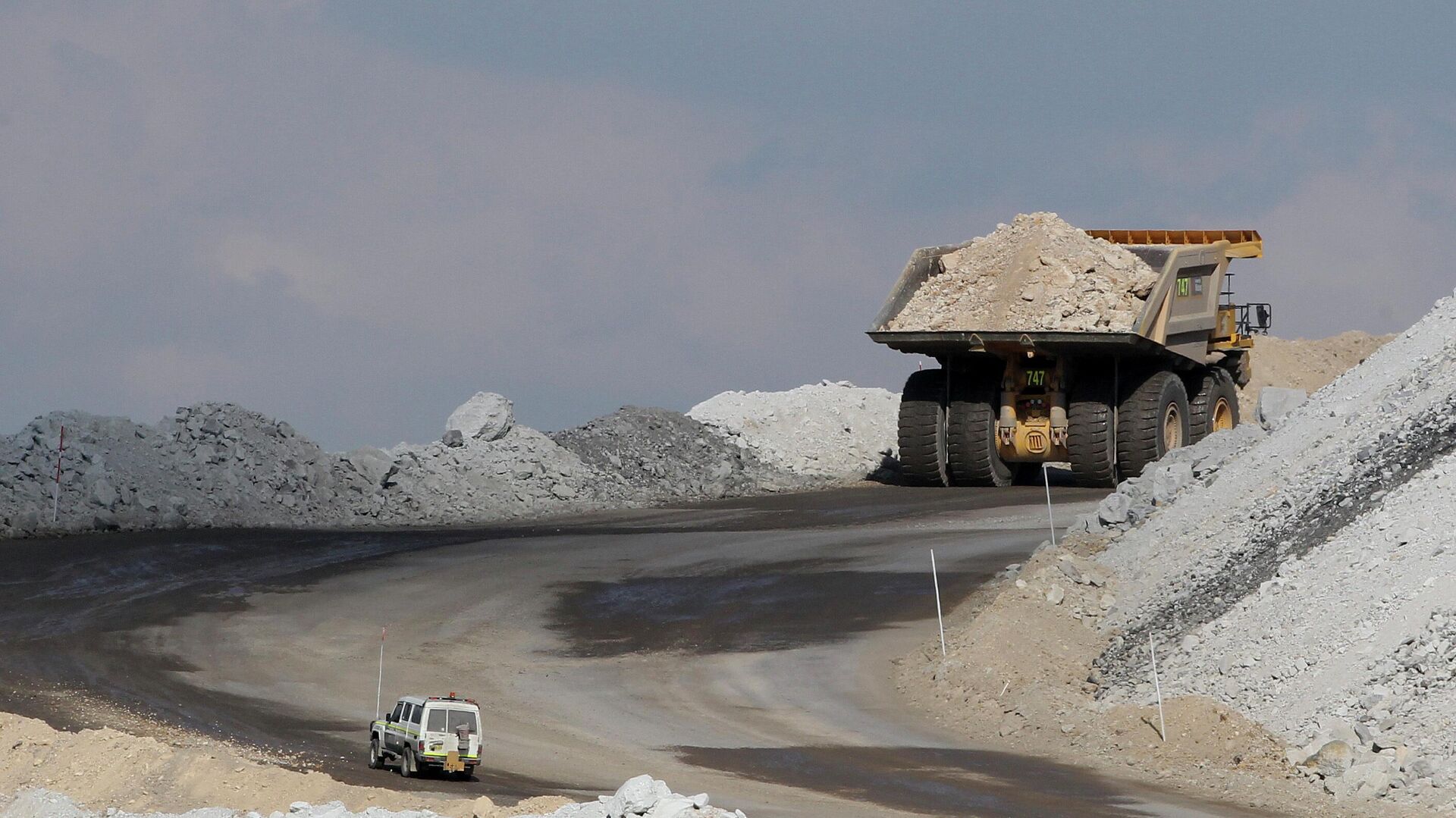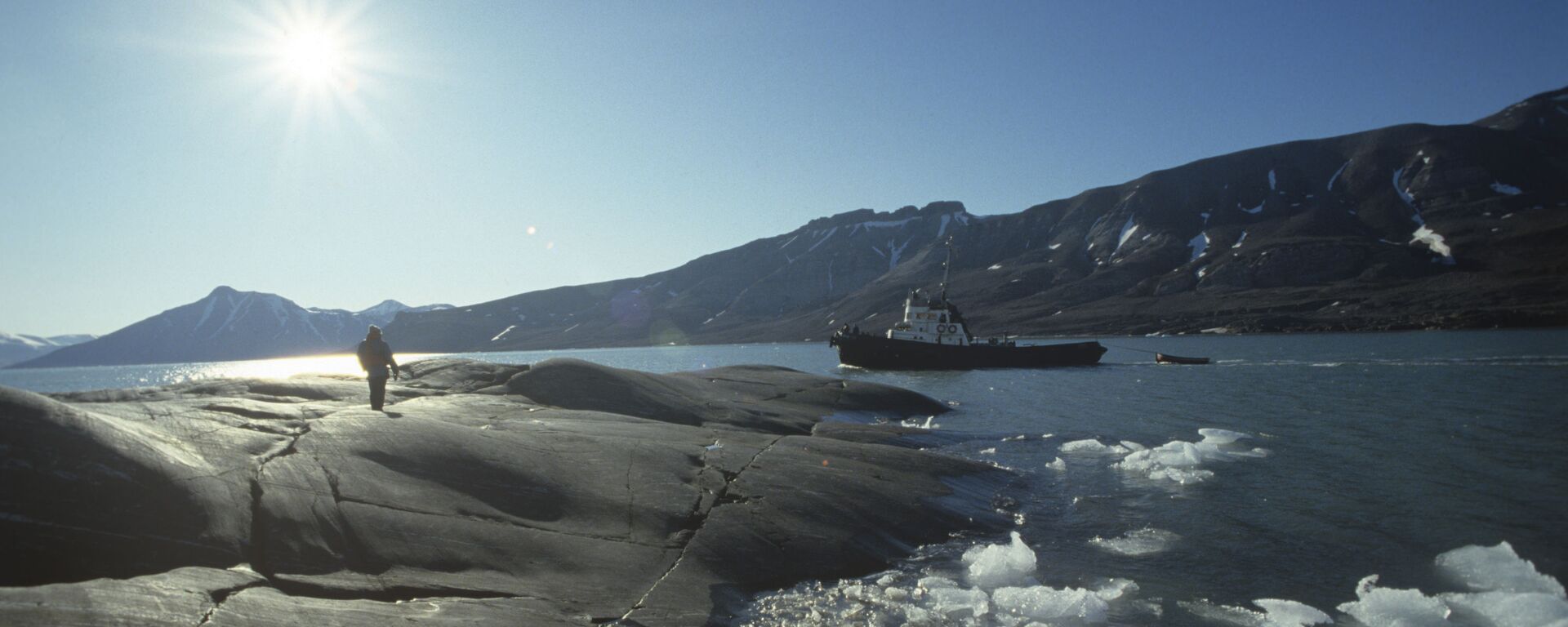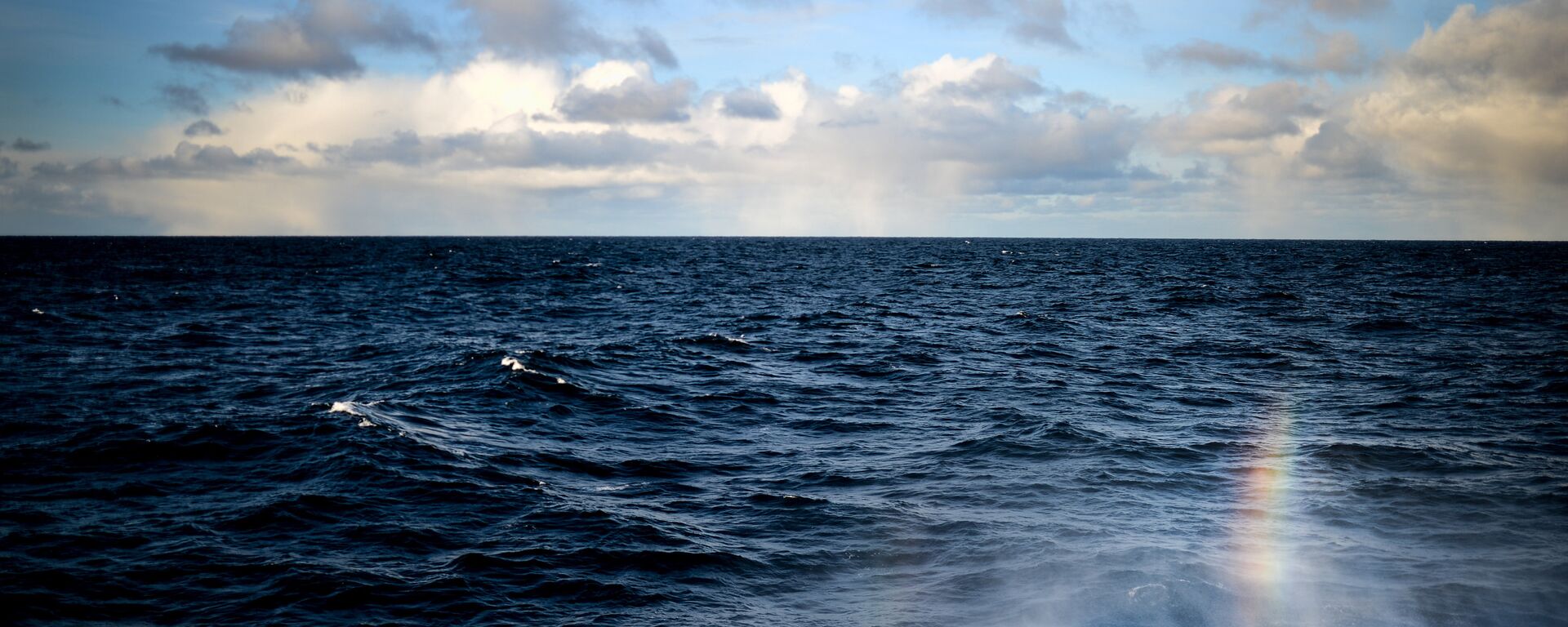https://sputnikglobe.com/20230705/could-norway-turn-worlds-largest-deposit-of-phosphate-into-goldmine-1111668995.html
Could Norway Turn World's Largest Deposit of Phosphate Into Goldmine?
Could Norway Turn World's Largest Deposit of Phosphate Into Goldmine?
Sputnik International
There is a bustling market for phosphorus and its refined products, in high demand in areas ranging from agriculture to batteries and with profits expected to grow.
2023-07-05T09:56+0000
2023-07-05T09:56+0000
2023-07-05T09:56+0000
economy
norway
china
european union (eu)
us geological survey (usgs)
mining
phosphate
phosphates
green technologies
https://cdn1.img.sputnikglobe.com/img/07e6/07/19/1097767409_0:0:2820:1586_1920x0_80_0_0_e0ba8b6d42688b369c7b20a0345c4fcc.jpg
A recently completed exploration by Norge Mining has uncovered a giant deposit of phosphate rock in Norway, pitched as the world's largest and harboring up to 70 billion tons of the precious material in high demand worldwide amid supply issues.The US Geological Survey listed the world's proven phosphate reserves at 71 billion tons, only slightly larger than the total uncovered in Norway. Prior to the discovery, the largest phosphate deposit was located in Morocco, totaling some 50 billion tons, followed by China at 3.2 billion tons and Egypt at 2.8 billion tons. Other significant deposits are located in the US, Syria, Uzbekistan, South Africa and Russia.The discovery was initially made by Norge Mining in 2018 based on data provided by the Norwegian Geological Survey. However, an extensive subsequent drilling program conducted by the company has found that the ore body in the ground, originally estimated to extend 300 meters below the surface, was in fact running wholly 4,500 meters deep, making it "world-class," according to the company.Mined phosphates are mostly used for producing fertilizer for agriculture that significantly boosts yields, whereas phosphorus, its refined product, is in high demand in high-energy density batteries and solar panels, making it a key mineral for the EU's (and by extension, the West's) plans for its much-touted "Green transition" and its pursuit for carbon neutrality. Needless to say, both offer huge trade opportunities for Norway, which has already become the bloc's premier supplier of energy, after self-maiming sanctions pushed Russian providers off the EU's market. In 2022, Norway became the EU's sixth most important trade partner, and may climb to further prominence given the potentially strategic nature of its exports. In the future, this may contribute to a new dependence being shaped, as the bloc seeks to decouple and derisk from China, currently one of its main sources of key minerals.Tellingly, phosphorus has already made its way to the EU's list of strategic raw minerals. Having all but stopped the refining of phosphorus, citing heavy pollution and high carbon emissions, the bloc has rendered itself almost entirely reliant on imports of phosphate and is concerned about its supply.Norge Mining is currently awaiting permits from the EU and the local government. According to the company itself, Norwegian ministers have been supportive of the project and are treating it as a high priority. Alongside phosphate, the Norwegian deposits were found to contain vanadium and titanium, used in the aerospace and defense industries and also classified by the EU as critical raw materials.What's at Stake for NorwayPhosphorus was accidentally discovered in 1669 by German scientist Hennig Brandt in his search for "the philosopher’s stone," which purportedly changed metals into gold. It has since been identified as a key element. It is essential for the creation of DNA, cell membranes, and for bone and teeth formation in humans. Phosphorus is the second-most-widely used fertilizer nutrient, after nitrogen and before potassium.The global phosphorus and derivatives market is projected to increase from $65.13 billion in 2021 to $85.01 billion in 2028 at a growth rate of 3.9 percent. The global phosphate fertilizer market is expected to reach $207 billion by 2026, with a growth rate of 5.1 percent.The driving factors are the rapid growth in the agriculture and food sectors to cover the needs of the world's increasing population amid limited availability of farmland. Asia is currently the largest market, due to large farming communities in China and India. However, growth here is somewhat restrained by stringent government regulations amid environmental hazards and risk of overuse.
https://sputnikglobe.com/20230609/can-norways-deep-sea-mining-bid-fuel-eus-faltering-green-transition-1111025223.html
https://sputnikglobe.com/20230621/black-day-for-norwegian-nature-as-oslo-plans-to-open-its-waters-for-deep-sea-mining-1111352038.html
norway
china
Sputnik International
feedback@sputniknews.com
+74956456601
MIA „Rossiya Segodnya“
2023
News
en_EN
Sputnik International
feedback@sputniknews.com
+74956456601
MIA „Rossiya Segodnya“
Sputnik International
feedback@sputniknews.com
+74956456601
MIA „Rossiya Segodnya“
phosphate deposit, mining in norway, strategic minerals, green transition, fertilizer production, phosphate ore
phosphate deposit, mining in norway, strategic minerals, green transition, fertilizer production, phosphate ore
Could Norway Turn World's Largest Deposit of Phosphate Into Goldmine?
There currently is a bustling market for phosphate rock as well as its refined products, which are quite sought-after in areas ranging from agriculture to batteries, with demand and profits expected to surge. Tellingly, the EU has listed phosphorous as a strategic raw mineral.
A recently completed exploration by Norge Mining has uncovered a giant deposit of phosphate rock in Norway, pitched as the world's largest and harboring up to 70 billion tons of the precious material in high demand worldwide amid supply issues.
The US Geological Survey listed the world's proven phosphate reserves at 71 billion tons, only slightly larger than the total uncovered in Norway. Prior to the discovery, the largest phosphate deposit was located in Morocco, totaling some 50 billion tons, followed by
China at 3.2 billion tons and Egypt at 2.8 billion tons. Other significant deposits are located in the US, Syria, Uzbekistan, South Africa and Russia.
The discovery was initially made by Norge Mining in 2018 based on data provided by the Norwegian Geological Survey. However, an extensive subsequent
drilling program conducted by the company has found that the ore body in the ground, originally estimated to extend 300 meters below the surface, was in fact running wholly 4,500 meters deep, making it "world-class," according to the company.
Mined phosphates are mostly used for producing
fertilizer for agriculture that significantly boosts yields, whereas phosphorus, its refined product, is
in high demand in high-energy density batteries and solar panels, making it a key mineral for the EU's (and by extension, the West's) plans for its much-touted "
Green transition" and its pursuit for carbon neutrality. Needless to say, both offer huge trade opportunities for Norway, which has already become the bloc's premier
supplier of energy, after
self-maiming sanctions pushed Russian providers off the EU's market. In 2022, Norway became the EU's sixth most important trade partner, and may climb to further prominence given the potentially strategic nature of its exports. In the future, this may contribute to a new dependence being shaped, as the bloc seeks to
decouple and derisk from China, currently one of its main sources of key minerals.
Tellingly, phosphorus has already made its way to the EU's list of strategic raw minerals. Having all but stopped the refining of phosphorus, citing heavy pollution and high carbon emissions, the bloc has rendered itself almost entirely reliant on imports of phosphate and is concerned about its supply.
Norge Mining is currently awaiting permits from the EU and the local government. According to the company itself, Norwegian ministers have been supportive of the project and are treating it as a
high priority. Alongside phosphate, the Norwegian deposits were found to contain vanadium and titanium, used in the aerospace and defense industries and also classified by the EU as critical raw materials.
What's at Stake for Norway
Phosphorus was accidentally discovered in 1669 by German scientist Hennig Brandt in his search for "the philosopher’s stone," which purportedly changed metals into gold. It has since been identified as a key element. It is essential for the creation of DNA, cell membranes, and for bone and teeth formation in humans. Phosphorus is the second-most-widely used fertilizer nutrient, after nitrogen and before potassium.
The global phosphorus and derivatives market is projected to increase from $65.13 billion in 2021 to $85.01 billion in 2028 at a growth rate of 3.9 percent. The global phosphate fertilizer market is expected to reach $207 billion by 2026, with a growth rate of 5.1 percent.
The driving factors are the rapid growth in the agriculture and food sectors to cover the needs of the world's increasing population amid limited
availability of farmland. Asia is currently the largest market, due to large farming communities in China and India. However, growth here is somewhat restrained by stringent government regulations amid environmental hazards and risk of overuse.




